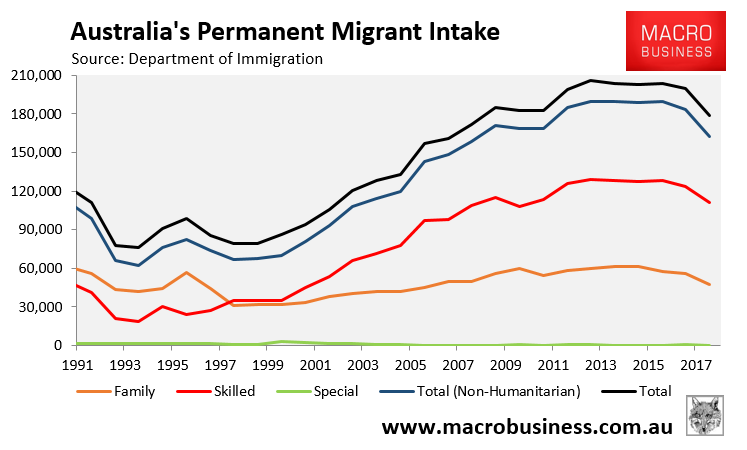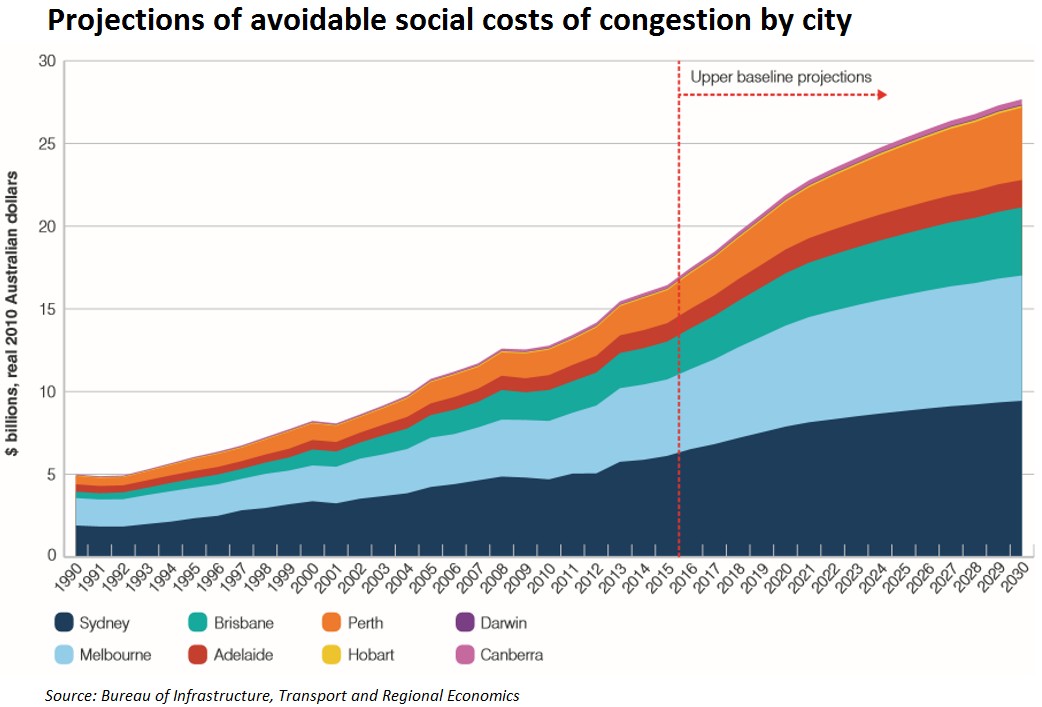Australia’s productivity growth has averaged less than 1% a year since the global financial crisis – well below the 30-year average of 1.6% – and the near-term outlook remains bearish. Productivity Commission chairman Michael Brennan has urged the federal government to pursue measures aimed at boosting productivity in the wake of a new forecast from the International Monetary Fund that real national income per capita will average just 0.3% annually over the next six years. From The AFR:
Productivity began to slow before the 2008 financial crisis and has averaged below 1 per cent since then. Treasury assumes productivity growth will equal its 30-year average of about 1.6 per cent…
Adding to a call by Reserve Bank of Australia governor Philip Lowe for politicians to apply a “laser-like focus” to productivity reforms to help lift subdued wages, Mr Brennan backed up that cry by calling for reforms to competition policy, regulation and the funding and design of the skills, health and education sectors.
The curious thing about Australia’s productivity slump is that is has coincided with the massive ramp-up in skilled migration:

For years Australians have been fed the false claim that skilled migrants are younger, more educated, and more productive than locals, and that without a strong immigration intake, the population would grow old and the economy would stagnate.
Economic models are often cited as proof that a strong immigration is ‘good’ for the economy because they show that real GDP per capita is moderately increased via immigration, based on several dubious assumptions.
First, it is generally assumed in these models that population ageing will result in fewer people working, which will subtract from per capita GDP. However, it is just as likely that age-specific workforce participation will respond to labour demand, resulting in fewer people being unemployed, as we have witnessed in Japan.
Even if this assumption was true, the benefit to GDP per capita would only be transitory. Once the migrant workers grow old, they too will add to the pool of aged people, thus requiring an ever-bigger immigration intake to keep the population age profile from rising.
Indeed, the Productivity Commission (PC) has for more than a decade debunked the myth that immigration can overcome population ageing. For example, in its 2010 submission to the Minister for Population, the PC explicitly noted that “substantial increases in the level of net overseas migration would have only modest effects on population ageing and the impacts would be temporary, since immigrants themselves age”.
Academic demographer and mass immigration spruiker, Peter McDonald, also previously stated that it is “demographic nonsense to believe that immigration can help to keep our population young”.
Second, it is generally assumed that migrant workers are more productive than the Australian born population and, therefore, labour productivity is increased through strong immigration. However, the evidence here is highly contestable, with migrants generally being employed below the level of their qualifications, as well as having lower labour force attachment than the Australian born population (more information here). Migrants have also tended to go into areas that are not experiencing skills shortages.
Third, economists generally ignore obvious ‘costs’ of mass immigration on productivity. Growing the population without commensurately increasing the stock of household, business and public capital to support the bigger population necessarily ‘dilutes’ the capital base, leaving less capital per person and lowering productivity. We have witnessed this first hand with the costs of congestion soaring across Australia’s big cities.

Moreover, the cost of retro-fitting Australia’s major cities with infrastructure to cope with larger populations is necessarily very expensive – think tunnelling and land acquisitions – with costs borne largely by the incumbent population.
Given Australia’s low savings rate, the large levels of housing and infrastructure investment required to keep pace with population growth also puts upward pressure on real interest rates. That, in turn, has kept the Australian dollar elevated for years making it harder to export from Australia and resulting in manufacturing closures.
Finally, high immigration has unambiguously helped to lift housing costs. This has made it more difficult for younger households to invest in businesses, limiting entrepreneurship. High housing costs also creates barriers to labour mobility and social mobility, both of which matter for achieving Australia’s productive potential.
Currently, there is no economic plan other than to flood Australia’s major cities with tens-of-thousands of extra people each year to stoke overall economic growth (but not growth per person), to support big business (e.g. the property industry), and to prevent Australia from going into recession (despite growth and income per person stagnating).
Meanwhile, productivity and individual living standards are being eroded through rising congestion costs, declining housing affordability, paying more for infrastructure (e.g. toll roads and water desalination), environmental degradation, and overall reduced amenity.
Mass immigration has hindered, not helped, Australian productivity.

